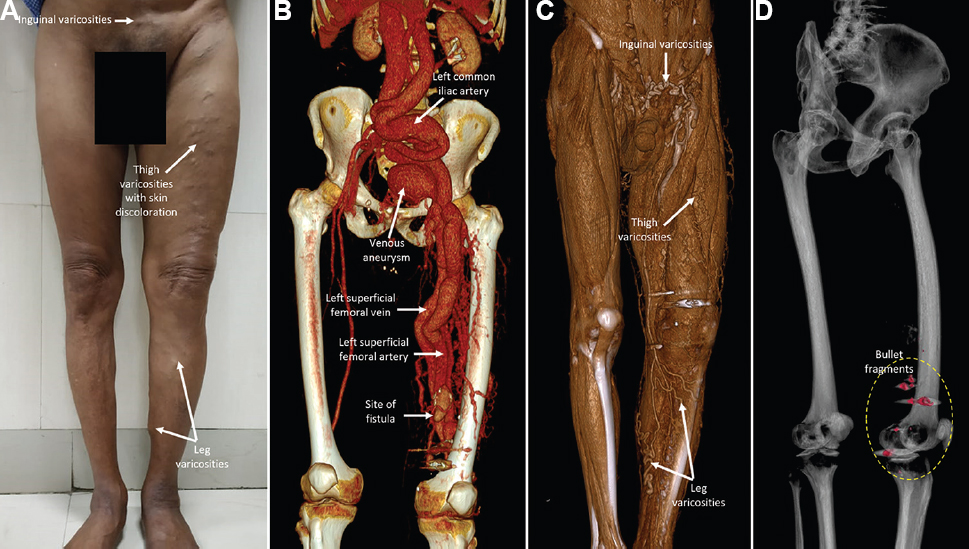Translate this page into:
Delayed presentation of a post-traumatic lower extremity arteriovenous fistula
*For correspondence: sanjeevradio@gmail.com
-
Received: ,
This is an open access journal, and articles are distributed under the terms of the Creative Commons Attribution-NonCommercial-ShareAlike 4.0 License, which allows others to remix, tweak, and build upon the work non-commercially, as long as appropriate credit is given and the new creations are licensed under the identical terms.
This article was originally published by Wolters Kluwer - Medknow and was migrated to Scientific Scholar after the change of Publisher.
A 70 yr old male† presented to the department of Cardiovascular Radiology and Endovascular Interventions, All India Institute of Medical Sciences, New Delhi, India, in October 2019, with a gradually progressive swelling of the lower left limb over the past five years accompanied by dull-aching pain on walking. Clinical examination revealed skin discolouration and superficial varicosities along the left thigh and leg (Figure A) with a thrill in the left inguinal region and upper thigh with positive Nicoladoni-Branham sign. On enquiry, the patient gave a history of gunshot wound to the left thigh 37 years back.

- (A) Clinical photograph showing skin discolouration and superficial varicosities along the left inguinal region, thigh and leg. (B and C) Computed tomography angiography showing fistulous communication between the left superficial femoral artery and vein in the lower third of the thigh with aneurysmally dilated and extremely tortuous iliac and femoral arteries and veins as well as superficial varicosities. (D) Retained bullet fragments noted adjacent to the fistula.
Computed tomography angiography demonstrated fistulous communication between the left superficial femoral artery and vein in the lower third of the thigh with aneurysmally dilated and extremely tortuous iliac and femoral arteries and veins as well as superficial varicosities (Figure B and C). The retained bullet fragments were also seen adjacent to the fistula (Figure D). As lesion morphology was unsuitable for endovascular management, the patient was advised for possible surgical intervention; however, the patient did not opt for the same.
Penetrating trauma (including stab and gunshot wounds) is an important cause of acquired arteriovenous fistula; however, delayed presentation after more than three decades is rare. Protracted escalation in the blood flow may result in aneurysmal dilatation of the blood vessels by altering the elastic fibre constitution of their walls.
Conflicts of Interest: None.





